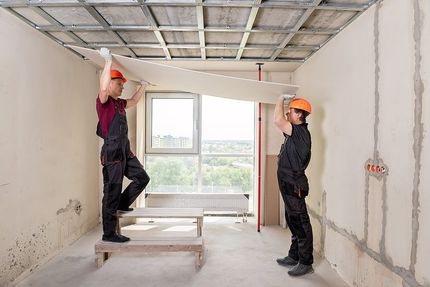Drywall Installation Facilitated: Tips for Perfect Outcomes
Drywall installment is commonly regarded as a difficult job, yet with the appropriate technique and understanding, it can become a convenient venture. Mastering techniques for reducing, hanging, and ending up drywall can substantially affect the result.
Selecting the Right Materials
Choosing the proper products for drywall installment is vital to achieving a resilient and visually pleasing finish. drywall repair. The key part, drywall sheets, generally can be found in various densities, with 1/2-inch sheets being conventional for interior wall surfaces. For locations requiring additional wetness resistance, such as kitchens or restrooms, think about making use of environment-friendly board or cement board, which are specifically designed to hold up against humidity

Additionally, selecting the best fasteners-- either screws or nails-- is important for securing the drywall to the framework. Drywall screws are normally preferred for their holding power and minimized threat of popping. Think about the finishing touches such as guide and paint, which not just improve the appearance yet also protect the drywall from wetness and wear.
Preparing the Setup Location
Prior to beginning the drywall installment procedure, it is crucial to prepare the installment area extensively. A clean workspace lessens the risk of damages to existing items and enables for effective activity during installation.
Following, check the walls and ceiling for any kind of flaws, such as fractures, openings, or mold and mildew. Address these problems ahead of time; spot any damages and permit enough time for repair services to completely dry. In addition, make sure that electric outlets, switches, and plumbing are appropriately positioned and represented, as this will influence drywall positioning.
Consider the environmental problems. A steady temperature and humidity level are essential for optimal bond and performance of the drywall products. Utilize a dehumidifier or heating system to produce suitable conditions. if needed.
Cutting and Hanging Drywall
The key to reliable drywall installment lies in the specific cutting and hanging of the panels. Make use of a straight edge and an energy knife to rack up the drywall along your dimensions, then snap it along the racked up line for a tidy break.

Constantly work from the top down and entrusted to right, ensuring that you maintain a staggered pattern to boost stability. Effectively hanging the drywall sets the foundation for a smooth surface, eventually leading to superior cause your drywall project.
Taping and Mudding Methods
While correct cutting and dangling of drywall establishes the stage, the following important step includes understanding taping and mudding strategies to make sure a smooth finish. Insulation is vital for strengthening joints and stopping cracks; it includes installing tape into the used joint compound (mud) Begin with a high quality fiberglass or paper tape, using the tape over the joint and pressing it right into the damp mud utilizing a taping knife, making sure no air bubbles remain.
As soon as the tape remains in location, apply a slim layer of joint substance over the tape, feathering the sides click here for more to create a smooth transition to the drywall surface area. Permit this layer to dry entirely before sanding it gently to get rid of flaws. Repeat this procedure, using added coats of mud as essential-- usually a couple of coats-- while gradually expanding the application location with each layer to accomplish a seamless look.
After the final coat dries out, sand the surface area with a fine-grit sandpaper until smooth. drywall installation. Remember to put on a mask during sanding to avoid breathing in dust fragments. Grasping these taping and mudding strategies is critical for attaining a professional-quality finish in your drywall installment
Completing Touches for Perfection
Attaining a perfect drywall setup goes past mudding and taping; it finishes in the ending up touches that elevate the general appearance. These final steps are vital in making certain a professional-grade surface that boosts the visual appeals of your area.
Begin by sanding the dried joint compound to develop a smooth surface area. drywall contractor. After fining sand, wipe down the walls with a wet cloth to get rid of any dust fragments, ensuring a tidy surface area for painting.
Following, use a guide especially created for drywall. This step is essential, as it assists secure the joint compound and provides an uniform base for the overcoat. When the guide dries out, examine for any type of blemishes, and retouch as needed.
Verdict
To conclude, effective drywall installment rests on the mindful option of products, my blog extensive preparation of the installation area, and specific execution of cutting and hanging additional reading strategies. Proficiency of taping and mudding processes is important for achieving a smooth coating. In addition, focus to completing touches, including priming and touch-ups, ensures a professional-grade outcome. By adhering to these standards, the top quality of craftsmanship can be considerably boosted, adding to the overall aesthetic and performance of the space.
Drywall installation is often perceived as an overwhelming job, yet with the ideal strategy and understanding, it can become a manageable undertaking.Selecting the proper materials for drywall installation is essential to accomplishing a long lasting and aesthetically pleasing coating.Before beginning the drywall installation process, it is vital to prepare the setup area extensively. Understanding these taping and mudding methods is important for achieving a professional-quality surface in your drywall installment.
In final thought, successful drywall setup hinges on the cautious selection of products, thorough prep work of the installation location, and specific execution of cutting and hanging strategies.